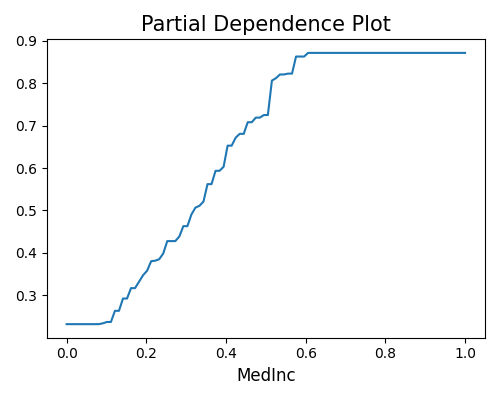3.1. Train and Register Sklearn Style Model¶
Assume you have already prepared the data.
from piml import Experiment
exp = Experiment()
exp.data_loader(data='CaliforniaHousing_raw')
exp.data_prepare(target='MedHouseVal', task_type='regression', random_state=0)
3.1.1. Train and Register Models¶
Then you can initialize a black-box model object and then put it into PiML for model training.
from lightgbm import LGBMRegressor
lgbm2 = LGBMRegressor(max_depth=2)
exp.model_train(lgbm2, name='LGBM_2')
3.1.2. Save Fitted Models¶
After that, you are able to extract the fitted model and save it for future use.
exp.model_save("LGBM_2", "CH_LGBM_2.pkl")
3.1.3. Load and Register Fitted Models¶
You can also load a fitted model from pickle files, and register it into PiML.
pipeline = exp.make_pipeline(model='CH_LGBM_2.pkl')
exp.register(pipeline, "LGBM_2_load")
3.1.4. Register Arbitrary Models and Data¶
If you don’t want to use the data prepared by the data module, you can also register arbitrary data and model into PiML.
from sklearn.model_selection import train_test_split
train_x, test_x, train_y, test_y = train_test_split(exp.dataset.x, exp.dataset.y, test_size=0.2)
lgbm7 = LGBMRegressor(max_depth=7, n_estimators=100)
lgbm7.fit(train_x, train_y)
pipeline = exp.make_pipeline(model=lgbm7, train_x=train_x, train_y=train_y.ravel(),
test_x=test_x, test_y=test_y.ravel())
exp.register(pipeline, "LGBM_7")
3.1.5. Run Diagnostic Tests¶
As a model is registered, then all the tests and explanation tools in PiML can be used. For example,
exp.model_explain(model="LGBM_7", show="pdp", uni_feature="MedInc", figsize=(5, 4))

